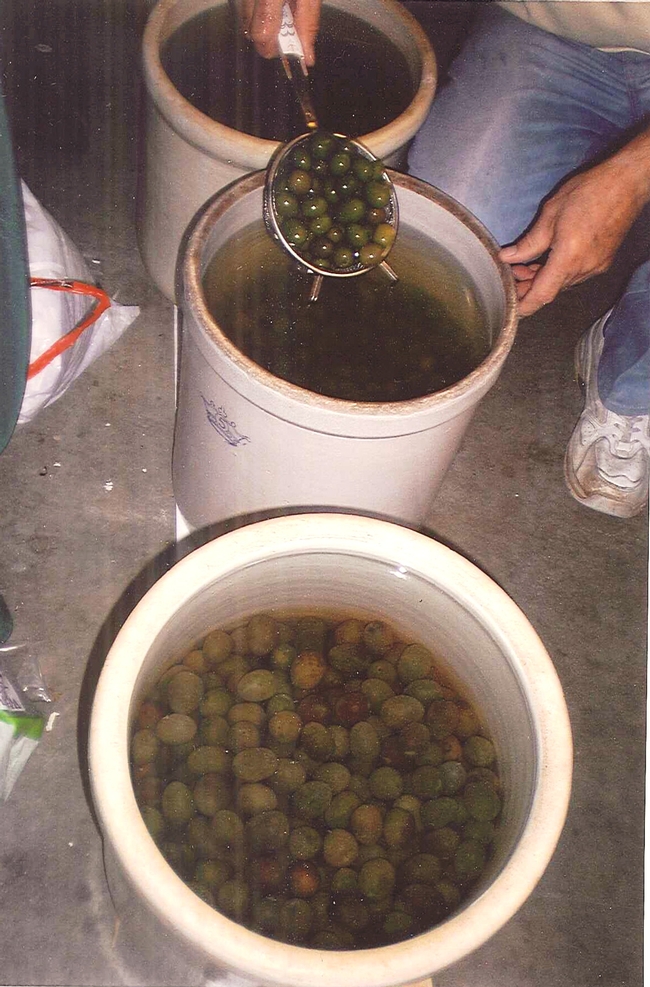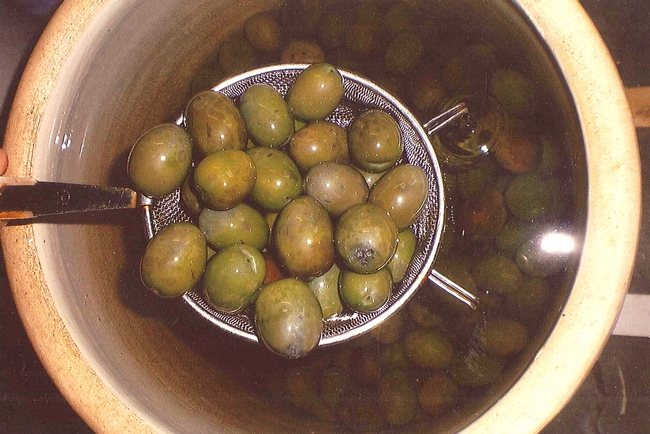Italian Olives
This fall the search for olives began. As my husband and I drove around Solano County, we noticed the barren olive trees. Olives are like many other fruits, they have good production years and not so good years. The unpredictable weather this past spring most likely affected fruit set.
Curing olives is a yearly Italian heritage tradition at our house. My husband’s grandfather and mother cured olives, so the family would have olives to eat and cook with during the holidays. Before meeting my husband, I thought olives were a table decoration, then learned they were a whole food and could be a WHOLE meal. In Italy, olives are found in barrels at the front door of grocery stores and also peddled on the streets wrapped in newspaper shaped into a cone.
In the past, we have picked olives on the property of our friends or family. Last year, we bought them in Oroville and this year they came from Corning. The olives this year are beautiful, large and shiny green. The type of olive my husband cures is called a Sevillano olive (Sicillian-style). Olives on the tree, at any stage of ripeness, are very bitter and inedible because of the oleuropein that is abundant in its flesh. The curing process removes the bitterness. There is quite a science to curing olives and definitely a time commitment. Once we obtain olives, the next 7 to 10 days are about preparing them to be eatable. When the curing process ends, they are bottled and pressured canned. In the past, he has seasoned them with fresh rosemary, garlic cloves, celery, red pepper flakes and even added vinegar. There are many ways to change the flavor, but our preference is leaving them plain in salted water.
There is great information available on the web from UC Davis, on safe methods for curing olives (Publication #8267). It takes a lot of time and is a lot of work, but we know our holidays will be celebrated again this year with delicious, home-cured Italian olives; a labor of love!




Posted by Howard Fitzpatrick on December 10, 2011 at 7:22 PM